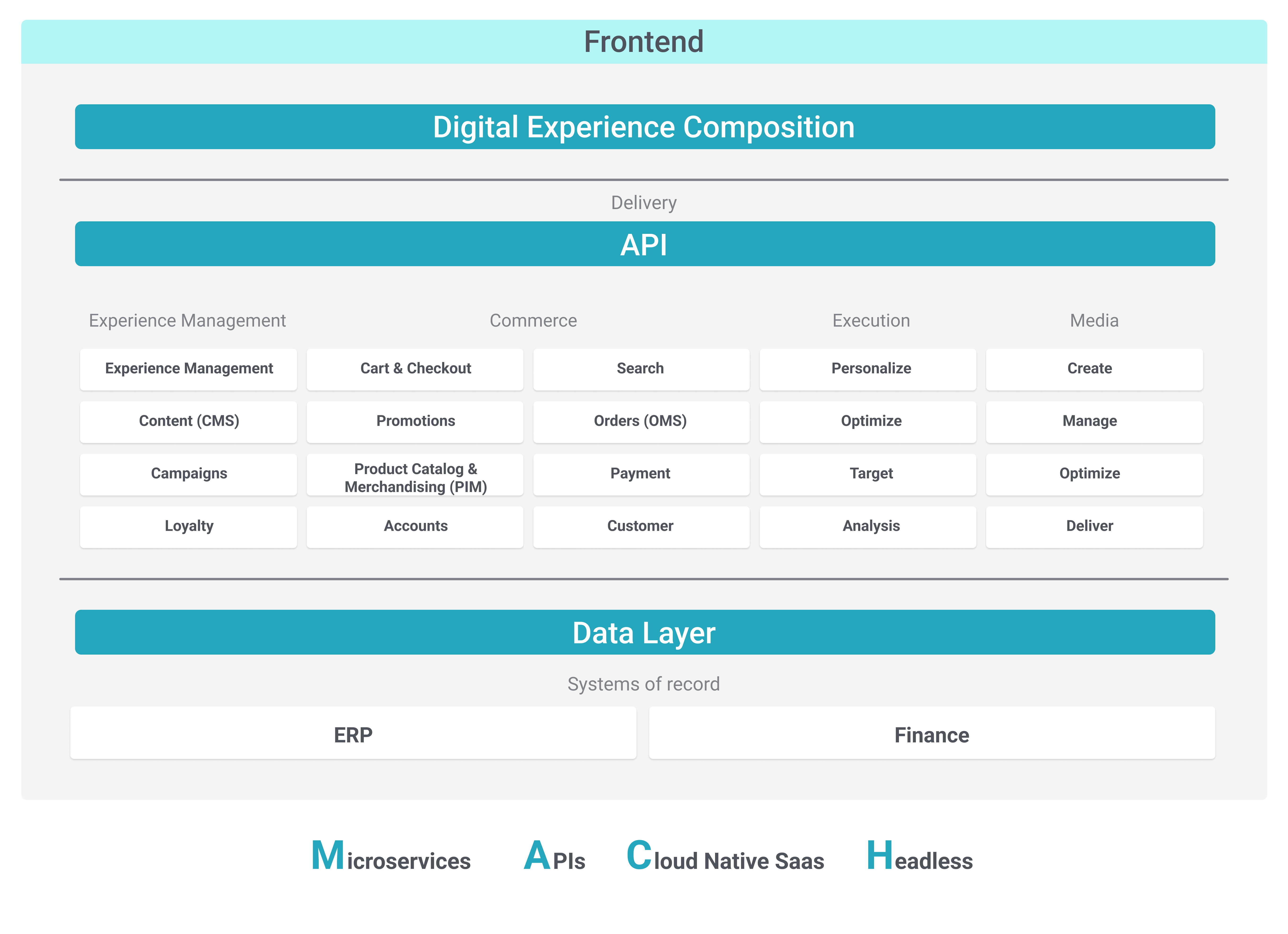What Does MACH Stand For?
MACH stands for Microservices, API-first, Cloud-native, and Headless, a set of design principles for modern, adaptable, and scalable digital architectures.
The MACH approach is increasingly utilized by businesses aiming for greater agility, flexibility, and future-proofing in their technology stack.

Let's break down each of these components represented in the diagram above (diagram source link):
- Microservices. Microservices architecture breaks down a monolithic application into a collection of loosely coupled services. Each microservice is a small, independent component that performs a specific function and communicates with others via APIs. This structure allows for the independent development, deployment, and scaling of individual services, which can increase development speed and system resilience.
- API-first. APIs (Application Programming Interfaces) are treated as first-class citizens in an API-first approach. This means they are designed and built upfront before the actual software or application development starts. APIs enable different software systems to communicate and interact with each other. An API-first approach improves efficiency and consistency and facilitates the integration of different methods, including microservices.
- Cloud-native. Cloud-native refers to developing applications explicitly to leverage the advantages of cloud computing architectures. Cloud-native applications are designed as a collection of independent services packaged in containers, dynamically orchestrated, and managed via agile DevOps processes. These applications can leverage the cloud's scalability, flexibility, and distributed network infrastructure.
- Headless. In a headless architecture, the front-end presentation layer of a website (the "head") is decoupled from the back-end logic and infrastructure (the "body"). This decoupling allows developers to make changes to one end without impacting the other, enabling more flexibility in content delivery across different platforms and devices. The communication between the front-end and back-end is handled through APIs.
The MACH architecture offers several benefits, including scalability, flexibility, and faster time-to-market. Since each component is decoupled, teams can choose the best technology for each task, and updates or changes can be made to one component without affecting the others. This architecture also supports continuous integration/continuous deployment (CI/CD) practices, facilitating regular and incremental updates without downtime.
Is Crystalize a MACH Solution?
It’s fair to say that anyone who embraces MACH principles, i.e., relying on Microservices, API-first, Cloud-native, and Headless architecture, can be considered a MACH solution. In that sense, so is Crystallize. However, we tend not to associate ourselves with a single technology or web dev approach.
Crystallize is built to reimagine eCommerce and allow businesses to make robust, scalable, and flexible systems that can meet changing business requirements and customer expectations anytime with any technology.